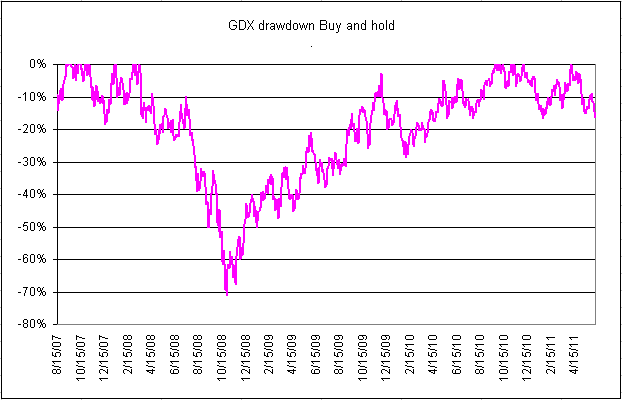
Originally Posted by
Kenneth K

That may be accurate if you replace 'trading' with the word 'holding'. Holding the different portfolios over time, you may end up with such risk-return characteristics. But when it comes to 'trading', none of that matters. None of those parameters come into material effect during the very short trading horizon of the Robots. Short term trading yields portfolios with totally altered risk-return characteristics.
What is efficient for a buy and hold index portfolio, is not necessary true for an actively traded portfolio. You cannot compare apple and oranges, eventhough they are both fruits and delicious.
Trying to pinpoint an optimal mix of Robot based trading in IWM/GLD is an exercise in futility. There will be periods when one specific mix is optimal. And that optimal mix is optimal for that particular period, in direct relation to the market movement in IWM and GLD during that particular time. And naturally, that will simply fluctuate over time.
I see a lot of effort is expended on slicing and dicing the Robot signals to get the most out of it. From my limited experience in the business, I would venture to guess that there is inherent risk in over optimizing within a very small data set. The nature of the market is change, eventhough very often, and ironically, the more things change, the more they stay the same. There is an inherent risk that what works perfectly for the last three years, may not work as well in the next three years. The key is the robustness of the algorithm.
It appears that the ROBOT methology of combining a trend following component with a mean reversion component is a very robust method that will withstood the test of different market conditions, with minor retuning over time. If people over optimize it for a very narrow trading period, the result may be counter productive.
As always, best of luck to everyone.






 Reply With Quote
Reply With Quote